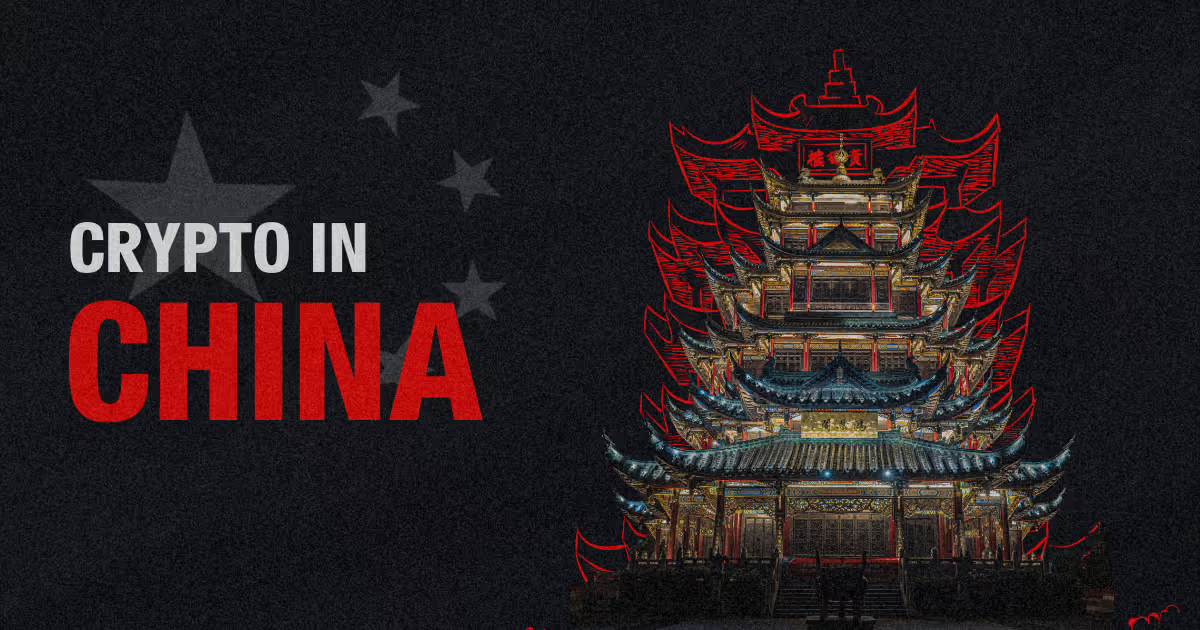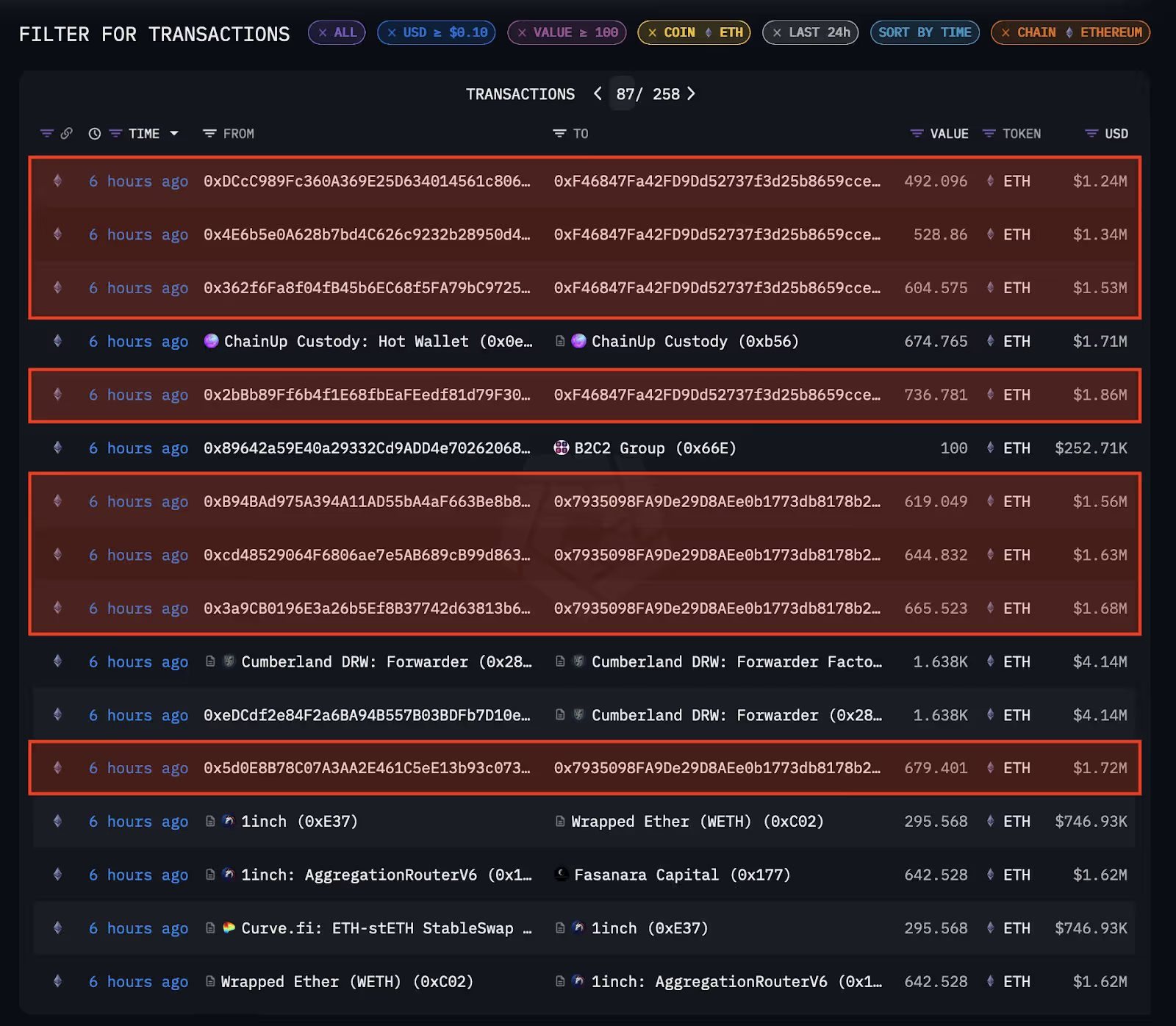October 9, 2025
at
10:05 am
EST
MIN READ
Crypto in China: A 2025 guide to the crypto landscape

The crypto landscape in China has evolved significantly since the country's initial involvement with cryptocurrencies over a decade ago. From mining dominance in Bitcoin’s early days to a regulatory crackdown culminating in a near-total ban on crypto trading and mining in 2021, Mainland China’s stance on crypto covers almost the entire spectrum: from embracing the industry to a complete and total elimination.
The PRC banned cryptocurrency trading and mining in Mainland China in 2021. Meanwhile, Hong Kong, a Special Administrative Region with its own legal system, has established a regulated framework for digital assets through the Hong Kong Monetary Authority (HKMA) and Securities and Futures Commission (SFC). Some analysts view Hong Kong’s developments as a potential reference point for future PRC policy.
As of 2025, the government of Mainland China, under PRC law, continues to prohibit cryptocurrency trading and mining. However, subtle shifts in regulatory posture and developments in Hong Kong offer signs of a possible softening stance in Beijing.
Summary
- China once dominated in global Bitcoin mining and centralized exchanges but regulatory bans quickly reduced its dominance in the industry.
- The majority of mining operations and centralized exchanges in China shifted off-shore, with many of them still dominant today around the world.
- Following the passing of the GENIUS Act in the US strengthening dollar-backed stablecoins, China has emphasized development of the digital yuan to reduce reliance on the US dollar.
- Analysts describe Hong Kong as a regulatory sandbox within the PRC’s “One Country, Two Systems” structure, with Hong Kong’s 2025 Stablecoin Ordinance serving as a bridge between Mainland China’s strict controls and global crypto innovation.
China’s Crypto Background
China was an early adopter of crypto, specifically in the sector of Bitcoin mining. 2013 marked an inflection point for mining in China, as Bitcoin began to receive nationwide media attention. This spawned the creation of several companies in the space, including miners themselves and manufacturers of ASIC mining hardware. Notably, Bitmain, the current largest manufacturer of ASIC mining hardware, was founded during this period. Many of the mining operators in the country also shifted into areas with cheaper electricity to further optimize their operations. The rapid adoption of Bitcoin mining in China in Bitcoin’s early days led to a Chinese dominance in Bitcoin’s hashrate, eventually seeing their share of the hashrate peak between 60-75% in the 2017-2020 period.

The crypto boom in China during this 6-7 year period also heralded the founding of several exchanges in Mainland China, including Huobi, OKX and Binance, which eventually grew into industry titans. In fact, Binance today still maintains its position as the top centralized exchange, holding an approximate 35% of spot trading volumes and 50% of derivatives trading volumes.
Huobi, OKX (originally OKCoin), and Binance were all founded in Mainland China between 2013 and 2017 but relocated offshore after a 2017 regulatory crackdown, continuing to operate as global exchanges. As 2021 rolled around, the regulatory environment progressively tightened, targeting Bitcoin mining operations and later, transactions, services and trading. Despite the stringent bans, China's influence persisted globally as miners and exchanges moved their operations abroad to neighboring Kazakhstan and Russia.
Chinese Government Crypto Holdings
Despite the ban, the PRC government may still maintain crypto holdings. Like many other governments, most of these assets are believed to have originated from seizures related to crypto-related crimes, most notably, the PlusToken Ponzi scheme.
PlusToken was a Ponzi scheme advertising attractive daily payouts using a non-existent arbitrage trading platform. The scheme emerged in April 2018, trapping over 2.6M users, predominantly from China and South Korea, over a one year period. At the point of exit, the team behind PlusToken is estimated to have held $2.2B in assets, predominantly in Bitcoin. Other tokens held with PlusToken include ETH, XRP, LTC and EOS.

Following the collapse of the scheme and the arrests of its operators, PRC authorities seized the assets, which according to court rulings, were to be "processed pursuant to laws and the proceeds and gains will be forfeited to the national treasury." However, official confirmation about whether the PRC government still holds these assets or has sold them has remained ambiguous.
On-chain analysts such as CryptoQuant CEO, Ki Young Ju, suggest that the Bitcoin has already been sold, having been passed through mixers and sent to various exchanges, including Huobi, for liquidation. Additionally, movement of over $445M in ETH from PlusToken linked addresses in 2024 also suggest some form of redistribution or liquidation in progress.

Chinese Crypto Ban
The first blow to the Chinese crypto industry came in December 2013, with a notice from the People’s Bank of China (PBOC), to prohibit financial institutions from handling Bitcoin, treating it as a commodity rather than a currency.
During the 2017 initial coin offering (ICO) boom, the PBOC and six other government ministries issued a ban on ICOs and token fundraising activities, as well as an order for all domestic centralized exchanges to cease operations.
2021 saw a further escalation to the initial regulations, with a ban on crypto-related services by financial institutions and payment firms in May 2021. A clampdown on Bitcoin mining activity in prominent mining hubs such as Inner Mongolia, Xinjiang and Sichuan, was enacted in June 2021, citing environmental concerns from electrical consumption. This shutdown led to the mass exodus of large Bitcoin mining companies in China to neighbouring countries such as Kazakhstan and Russia, which, as a result, now hold a significant share of the global hashrate.

The heaviest blow was dealt in September 2021 when the country’s most powerful regulators, including the PBOC, issued a joint statement officially banning all cryptocurrency transactions, including crypto-to-fiat and crypto-to-crypto trades, regardless of platform. The ban effectively declared all crypto transactions and trading to be illegal, representing the most severe ban thus far.
Despite the restrictions on trading and transactions involving cryptocurrencies, it is not explicitly illegal for individuals to own cryptocurrencies.
Stablecoins
In 2025, the United States established a comprehensive regulatory framework for stablecoins through the GENIUS Act, signed into law by President Trump in July. This legislation marked a historic step toward regulatory clarity and oversight of stablecoins and their use, especially surrounding their issuance and collateral requirements. The GENIUS Act restricts stablecoin issuance to insured depository institutions and approved financial entities, ensuring that all stablecoins issued are backed 1:1 by high-quality liquid assets such as physical currency, US Treasury bills, and other low-risk securities. The act also imposes rigorous transparency, anti-money laundering (AML), and consumer protection requirements. By creating predictable standards and fostering trust, the legislation facilitates broader stablecoin adoption, further reinforcing the US dollar's dominance in global digital payments and settlements, and strengthens the dollar’s status as the preferred global reserve currency.

In the face of strengthened US dollar dominance, China has stepped up efforts in the stablecoin arena to internationalize the Yuan, a currency which only makes up ~2.9% of global payment value. China's main focus remains on promoting its central bank digital currency (CBDC), the digital yuan (e-CNY), aiming to enhance monetary sovereignty and reduce reliance on the dollar-based international financial system.
The move is a deviation from its harsh stance on crypto since 2021, possibly signalling a softening of China’s rigid anti-crypto stance. While Mainland China maintains broad prohibitions on cryptocurrency-related activities, Hong Kong has pursued controlled innovation under its own regulatory authorities (HKMA and SFC). Some commentators suggest Hong Kong’s evolving regime could serve as a testing ground observed by policymakers in Beijing. In August 2025, the HKMA implemented the Stablecoin Ordinance in Hong Kong, establishing a licensing regime for stablecoin issuers.
Hong Kong
Since the recent developments in the stablecoin sector, Hong Kong has emerged as a leading hub for crypto innovation within the Greater China region, underpinned by a comprehensive regulatory framework for stablecoins and growing institutional interest.
In August 2025, the HKMA launched its Stablecoin Issuer Licensing Regime under the Stablecoin Ordinance, establishing stringent requirements for capital adequacy, reserve asset segregation, and anti–money laundering controls, while permitting licensed banks and fintech firms to issue dollar- and asset-backed tokens for retail and wholesale use. This regulatory clarity has attracted high-profile advocates, including Eric Trump, who has engaged with Hong Kong legislators and industry forums to support crypto entrepreneurship, signaling confidence in the city’s legal certainty and its role as a bridge between East and West.
Observers view Beijing’s approach to Hong Kong’s burgeoning crypto ecosystem as strategic rather than permissive, effectively using the Special Administrative Region (SAR) as a controlled testbed for digital asset integration. By allowing Hong Kong to pioneer stablecoin frameworks and pilot cross-border settlement projects, Beijing can monitor risks and benefits before considering broader mainland adoption. This “sandbox model,” as described by some analysts, enables PRC authorities to observe operational resilience, compliance challenges, and market dynamics, potentially informing future policy on decentralized cryptocurrencies and digital yuan interoperability, while maintaining its strict crypto prohibitions on the mainland.
Conclusion
Mainland China’s relationship with crypto in 2025 may seem paradoxical at first glance: a firm ban on decentralized cryptocurrencies within its borders, yet a cautious willingness to observe and learn from controlled digital-asset experiments taking place in Hong Kong.
While Beijing remains committed to the digital yuan as its primary vehicle for financial innovation and monetary influence, the creation of a regulated stablecoin ecosystem in Hong Kong demonstrates a recognition of crypto’s growing role in global finance. This dual-track approach allows Mainland China to maintain strict domestic oversight while still monitoring (and, in some respects, benefiting from) international developments, particularly as the United States strengthens its dominance through comprehensive stablecoin regulation.
For investors, entrepreneurs, and policymakers, the message is clear: while Mainland China remains closed to open crypto markets, Hong Kong is emerging as a strategically positioned hub that could shape the future of digital assets in the region. Whether this will ultimately lead to a broader softening of Beijing’s stance will depend on the balance it strikes between state control, economic opportunity, and global competition.





































































































































































































































.png)